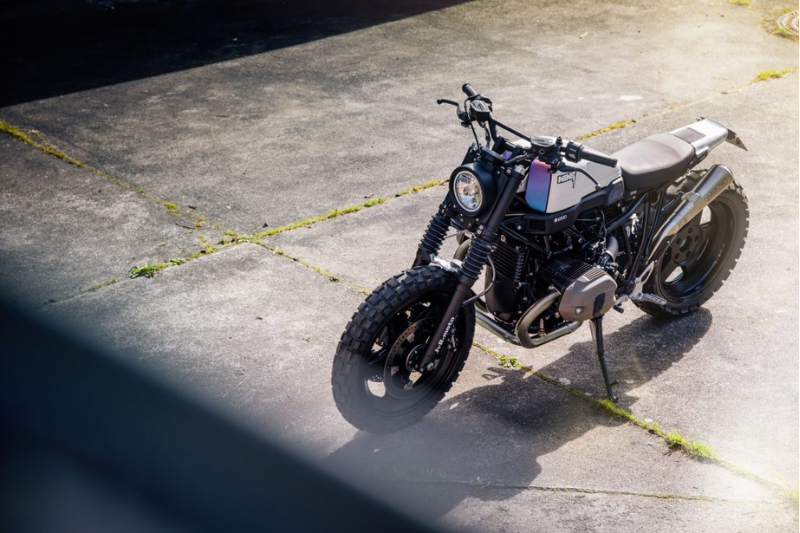SEARCH BY CATEGORIES
SEARCH BY INSPIRATIONS
- Air filters
- Brake & Clutch levers
- Electric box
- Exhaust
- Fenders
- Footpegs
- Front protections
- Front suspension
- Front suspension protections
- Fuel tanks
- Handle grips
- Handlebar
- Handlebar switch controls
- Headlights
- License plate holder
- Mirrors
- Mudguards
- Rear frame
- Suspensions
- Seats
- Silencers
- Speedometers
- Taillights
- Thermal strips
- Turn signals
- Air filters
- Belows front suspensions
- Brake & clutch levers
- Electric box
- Engine protection
- Exhaust
- Fenders
- Foot pegs
- Front suspensions
- Fuel tanks
- Handle grips
- Handlebar switch controls
- Handlebars
- Headlights
- License plate holder
- Mirrors
- Mudguards
- Rear frame
- Rear light
- Rear suspensions
- Seats
- Silencers
- Speedometers
- Thermal strips
- Turn signals
- Air filters
- Belows front suspensions
- Brake & Clutch levers
- Electric box
- Exhausts
- Fenders
- Foot pegs
- Front suspensions
- Fuel tanks
- Handle grips
- Handlebar switch controls
- Handlebars
- Headlights
- License plate holders
- Mirrors
- Mudguards
- Rear light
- Rear suspensions
- Seats
- Silencers
- Speedometers
- Thermal strips
- Turn signals
- Air filters
- Belows front suspension
- Brake & Clutch levers
- Electric box
- Exhaust
- Fenders
- Foot pegs
- Front protection
- Front suspensions
- Fuel tanks
- Handle grips
- Handlebar switch controls
- Handlebars
- Headlights
- License plate holders
- Mirrors
- Mudguards
- Rear frame
- Rear light
- Rear suspensions
- Seats
- Silencers
- Speedometers
- Thermal strips
- Turn signals
- Air filters
- Belows front suspensions
- Brake & Clutch levers
- Electric box
- Engine protection
- Exhausts
- Fenders
- Foot pegs
- Front suspensions
- Fuel tanks
- Handle grips
- Handlebar switch controls
- Handlebars
- Headlights
- License plate holders
- Mirrors
- Mudguards
- Rear frame
- Rear light
- Rear suspensions
- Seats
- Silencers
- Speedometers
- Thermal strips
- Turn signals
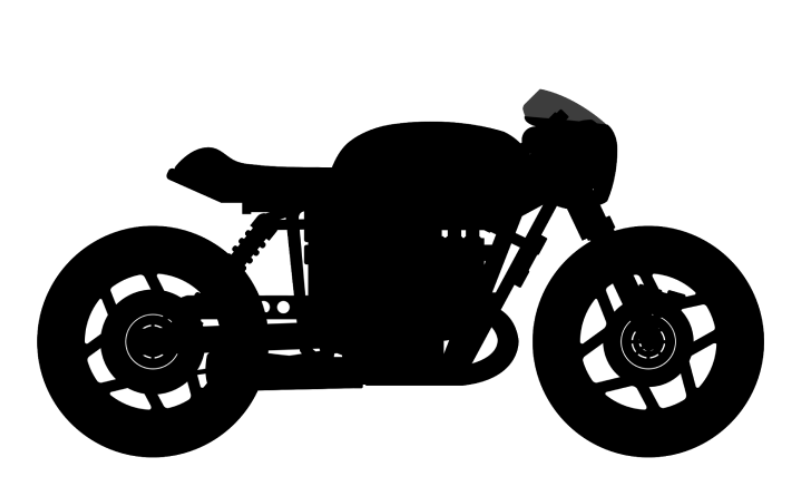
- Air filters
- Brake & Clutch levers
- Electric box
- Exhaust
- Fenders
- Footpegs
- Front protections
- Front suspension
- Front suspension protections
- Fuel tanks
- Handle grips
- Handlebar
- Handlebar switch controls
- Headlights
- License plate holder
- Mirrors
- Mudguards
- Rear frame
- Suspensions
- Seats
- Silencers
- Speedometers
- Taillights
- Thermal strips
- Turn signals

- Air filters
- Belows front suspensions
- Brake & clutch levers
- Electric box
- Engine protection
- Exhaust
- Fenders
- Foot pegs
- Front suspensions
- Fuel tanks
- Handle grips
- Handlebar switch controls
- Handlebars
- Headlights
- License plate holder
- Mirrors
- Mudguards
- Rear frame
- Rear light
- Rear suspensions
- Seats
- Silencers
- Speedometers
- Thermal strips
- Turn signals

- Air filters
- Belows front suspensions
- Brake & Clutch levers
- Electric box
- Exhausts
- Fenders
- Foot pegs
- Front suspensions
- Fuel tanks
- Handle grips
- Handlebar switch controls
- Handlebars
- Headlights
- License plate holders
- Mirrors
- Mudguards
- Rear light
- Rear suspensions
- Seats
- Silencers
- Speedometers
- Thermal strips
- Turn signals

- Air filters
- Belows front suspension
- Brake & Clutch levers
- Electric box
- Exhaust
- Fenders
- Foot pegs
- Front protection
- Front suspensions
- Fuel tanks
- Handle grips
- Handlebar switch controls
- Handlebars
- Headlights
- License plate holders
- Mirrors
- Mudguards
- Rear frame
- Rear light
- Rear suspensions
- Seats
- Silencers
- Speedometers
- Thermal strips
- Turn signals
- Air filters
- Belows front suspensions
- Brake & Clutch levers
- Electric box
- Engine protection
- Exhausts
- Fenders
- Foot pegs
- Front suspensions
- Fuel tanks
- Handle grips
- Handlebar switch controls
- Handlebars
- Headlights
- License plate holders
- Mirrors
- Mudguards
- Rear frame
- Rear light
- Rear suspensions
- Seats
- Silencers
- Speedometers
- Thermal strips
- Turn signals
PLUS DE MOTO
Add description, images, menus and links to your mega menu
A column with no settings can be used as a spacer
Link to your collections, sales and even external links
Add up to five columns
Add description, images, menus and links to your mega menu
A column with no settings can be used as a spacer
Link to your collections, sales and even external links
Add up to five columns
Add description, images, menus and links to your mega menu
A column with no settings can be used as a spacer
Link to your collections, sales and even external links
Add up to five columns
Add description, images, menus and links to your mega menu
A column with no settings can be used as a spacer
Link to your collections, sales and even external links
Add up to five columns
GUIDE TO MOTORCYCLE STYLES: CAFE RACER, SCRAMBLER, BOBBER ETC...
April 18, 2024

The terms used to recognize the different styles of motorcycles may seem barbaric to the uninitiated.
These are designations attributed to a group of motorcycles based on their characteristics.
Indeed, in the motorcycle customization universe, there are many families with different styles, objectives, and philosophies.
The common point among these different families of preparations is the love of enthusiasts for modifying and improving motorcycles in order to have a unique style motorcycle.
Already among the family of motorcycles, we have several distinct categories such as roadsters, sports bikes, touring bikes, trails, supermotos, customs...
Custom motorcycles are classified with these criteria similar to standard motorcycles. The most well-known style of modified motorcycles is the cafe racer, followed by the scrambler and the bobber.
We will see and define these families so that others are more or less known.

The Cafe Racer
The cafe racer is the most well-known type of customization.
Some people associate or use the term cafe racer to refer to all custom motorcycles. Because there is no term to designate a modified style motorcycle other than the name of the family to which it belongs. (Unless using the word: customization).
Cafe racers originated in the 1960s in England. Bikers started modifying their motorcycles to race from café to café (according to legend). Thus, the term "cafe racer" was born.
The riding style is rather sporty.
There is example about a cafe racer:
The cafe racer has specific characteristics that distinguish it. Here are the most notable modifications:
- Clip-on handlebars
- A fairing (front bodywork)
- A single-seat cowl
- Rearset foot controls
In addition to these, other parts of the motorcycle can be modified to suit your style.

The Scrambler
The scrambler is an increasingly popular type of customization that is starting to outshine the cafe racer in terms of popularity.
Indeed, the scrambler, especially the street scrambler, is more accessible in terms of riding and more versatile.
The scrambler is a stripped-down motorcycle, intended for mixed road and off-road use.
This style of motorcycle developed from the 1960s onwards. At that time, few different motorcycles were available for sale, so several friends decided to transform their small roadsters into more versatile motorcycles to ride on both roads and trails.
Here's an example of a Triumph scrambler from a private owner:

The scrambler has specific characteristics that distinguish it. Here are the most important modifications:
- Higher exhaust pipes
- Improved and raised suspensions
- A specific seat
- Optimized lights, tank, and other accessories
- All-terrain or mixed tires

The Bobber
The bobber is a motorcycle reduced to its simplest form. All "unnecessary" elements are removed and others are changed.
The purpose of this type of preparation, designed in the 1950s, was weight savings to increase performance.
The bobber is all about look and a special philosophy.
On a bobber, you cruise, you look at the landscape, and you enjoy the sound of the motorcycle.
Here's an example of a bobber from Zero Engineering:
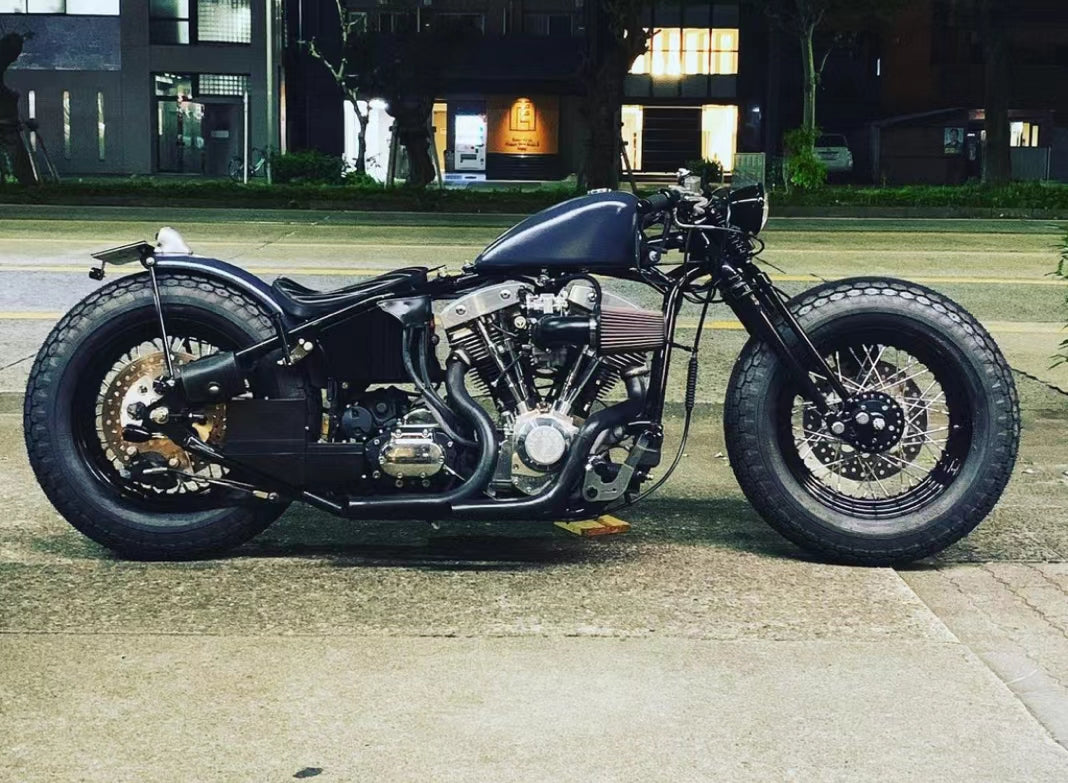
The bobber has specific characteristics that distinguish it. Here are the most notable modifications:
- A solo seat
- Large tires
- Spoked wheels
- A Peanut or Wassell tank
- A low handlebar
And to go further:
- A rigid frame
- A springer fork
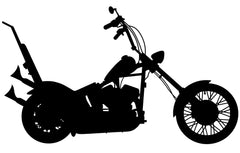
Chopper
The chopper is a well-known motorcycle style for several years. It's a bit of the "extravagant" version of the bobber.
Here's an example of a Japanese-style chopper on Virago 250cc:

The chopper has specific characteristics that distinguish it. Here are the most notable modifications:
- A large front wheel
- A high handlebar
- Spoked wheels
- A Peanut or Wassell tank
- Highly detailed paintwork
And to go further:
- A rigid frame
- A springer fork
We will soon offer a complete article on the chopper to provide you with all the information you need.
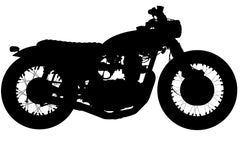
Bratstyle
The bratsyle comes from Japan. It is associated with the name of the workshop that started developing this style of motorcycle on their preparations.
In principle, it is a lowered motorcycle with a comfortable riding position. This type is ideal for road trips.
Here's an example of a bratstyle made by an Englishman based on TX650:

The technical features that define the bratstyle are as follows:
- No unnecessary elements (fairing, plastics, too large fenders...)
- A wide raised handlebar
- A thin and flat seat
- Lowered suspensions
Tracker
The tracker or street tracker comes from competition and more precisely from flat track. It is a motorcycle race held on a dirt oval where motorcycles slide at high speed in corners.
Here's an example of a tracker based on Yamaha:
The flat tracker is characterized by the use:
- A headlight plate like on motocross bikes
- A very wide handlebar
- Special shell and seat (somewhat like cafe racers)
- Side plates

Prepared Trails
Here is a type of motorcycle that is recent and still rare on the roads, also called Scrambler ADV.
They are also called "Retro Rally" or "Dakar Inspired".
It involves transforming all types of motorcycles for adventure.
This is a more advanced preparation than the scrambler. Indeed, the goal is really off-road rather than just some dirt roads.
Thus, it is not uncommon to see Harley Sportsters ready for rally raids.
Here's an example done by Roland Sands on a KTM 790:
To have this type of preparation, here are the basic characteristics:
- Large volume tank
- High exhaust
- All-terrain tires
- Suitcase support / suitcase / Saddlebag
- Handguards
- Headlight plate
- Longer shocks and fork
- High fenders

Bagger
Basically, a bagger is a lightweight touring motorcycle and then it went nuts...
For many bagger owners, having the same motorcycle as everyone else is not possible.
These customizations are often elaborate and aim to make the motorcycle very fluid, not to mention the often bright colors found in many custom bagger designs.
Often the bagger has an engine tune-up. Indeed, this type of customization is perfect for riding long hours and long distances.
Here's the F Bomb’s T Road Glides:

Regarding modifications, here are the most important elements of a bagger preparation:
- Engine tuning
- Very large front wheel
- "Fluid" saddlebags
- Profiled fenders
- Air suspension
- Mid-height handlebars
- Specific exhaust
Sign up for the newsletter, we will soon offer you a complete article on the subject.

Bratcafe
As the name suggests, "brat cafe" or otherwise called "brat cafe racer" or "brat racer" is the combination of a bratstyle and a cafe racer .
The brat cafe takes atypical elements from these 2 motorcycle preparation variants to create a new one.
The 2 most striking elements of these variants are the clip-on handlebars and the "bench" type saddle.
Here's a beautiful bratcafé build Honda:
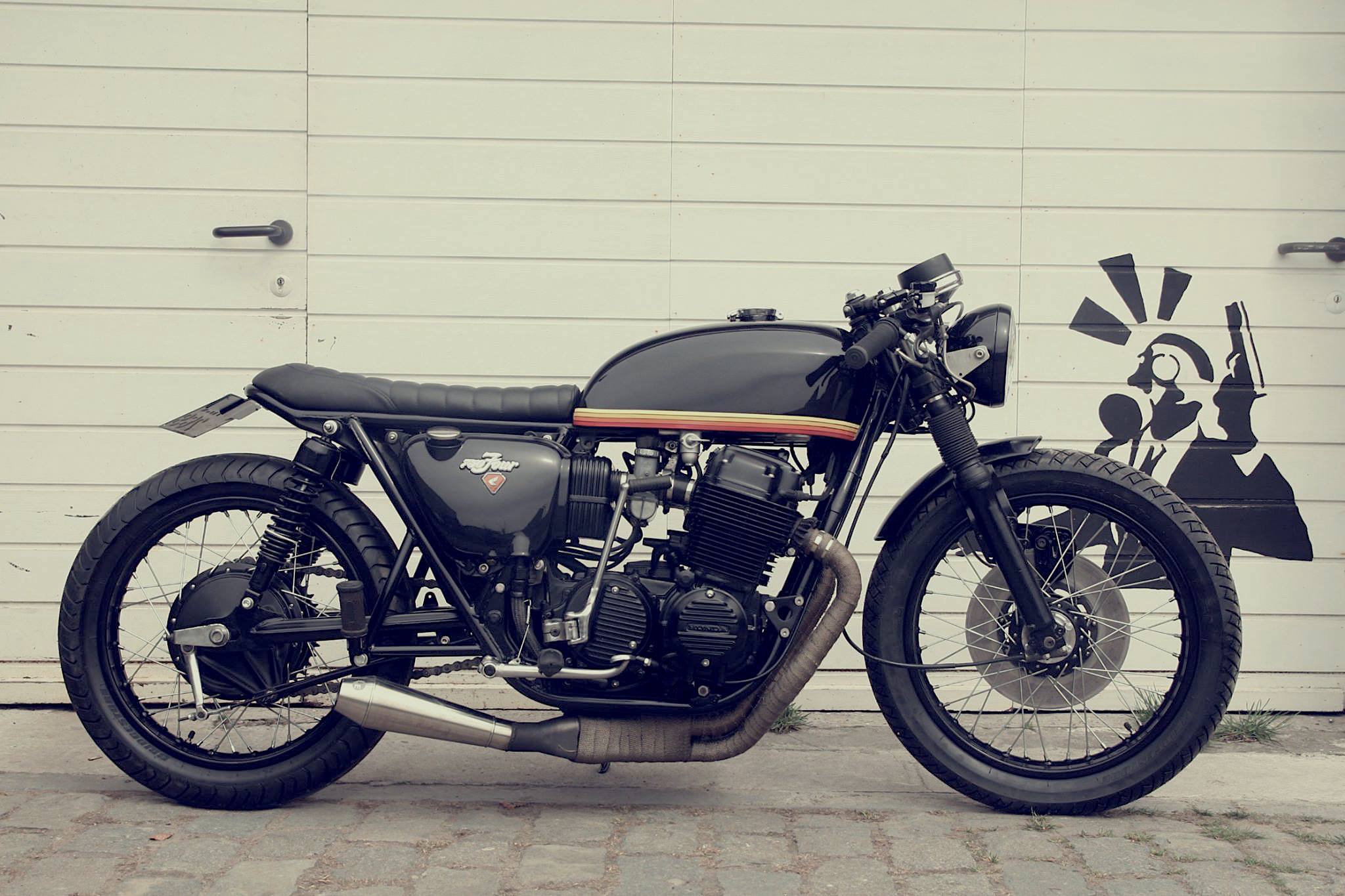
The characteristics of the bratcafé are as follows:
- Flat saddle
- Low suspensions
- Clip-on handlebars or clubman
- Short exhaust
- Round headlight

The Custom Muscle
The Custom Muscle (or muscle bike) or sporty custom is a type of preparation that creates big sports customs like the Harley-Davidson V-Rod.
Considered still too tame and flavorless for some enthusiasts (🤷♂️), these big babies are prepared in a spectacular manner.
This type of preparation requires major modifications and therefore a budget and skills to match.
The Russians at BOX39 specialize in this type of prep. Here's a very nice example:

Regarding the characteristics of this type of preparation, we find:
- Pneumatic suspensions
- Specific fairings (rear and front)
- A belly pan (common)
- Wide rims and tires
- Wide curved handlebars
Follow our blog and you will soon see more information on this subject.

The Chicano Style
This type of preparation comes from Hispanic-American culture and is the two-wheeled version of the famous low-riders cars.
The Chicano style is generally carried out on a Harley-Davidson Softail Deluxe and has major modifications whose goal is purely aesthetic.
The bike style is very flashy with chrome everywhere, bright paint, and imposing elements like the exhaust or handlebar.
A beautiful example of Chicano Style seen on Pinterest:
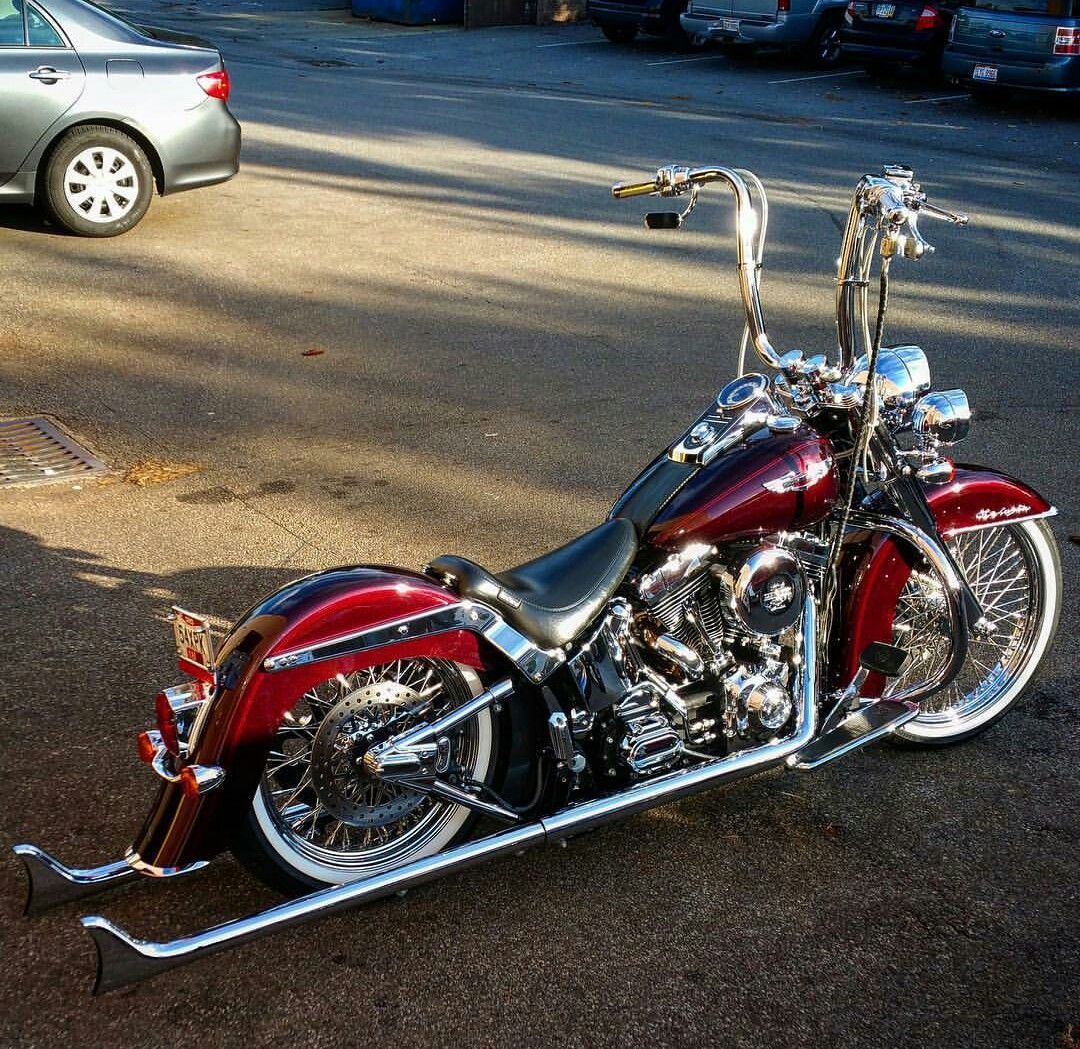
Here are the characteristic elements of a Chicano Style:
- Large multi-spoke rims
- Pneumatic suspensions
- Very high handlebars
- Very long exhausts
- Long and low fenders
- Flashy paint
- Chrome everywhere
This type of preparation can also be seen with saddlebags.
Our article on the chicano style will be published soon.

The Club Style
The club style is the type of preparation to optimize the performance of a Harley or other custom.
Indeed, this style comes from custom owners grouped in biker clubs who sought to improve their bikes to ride longer, faster, and more efficiently on bikes that are not intended for this purpose.
This style was also popularized with the help of the series Son of Anarchy.
To illustrate this category, here's a preparation done by Southeast Custom Cycles on a Dyna Street Bob:

Here are the basic elements of the appearance of a Clubstyle bike:
- 2 in 1 exhaust
- High rear shocks
- Improved engine performance
- Front fairing (often used)
- T-bar handlebar
Other Styles
There are also several types of customizations that cannot be classified into the previous categories and are still scarce to define their codes, or their style is yet to be defined.
Kerkus Style
In this category, we can mention this CBX750 by Kerkus:

Based on sports bikes from the 80s, this customization features a riding position and fairing reminiscent of club styles and a specific rear cowl. Additionally, the motorcycle is lowered in the fashion of brat styles.
The aim is to retain the look of this type of bike while adding originality.
Restomod
Restomod is a light customization applied to legendary bikes to enhance their performance and reliability.
An example is the Ténéré seen on BikeExif:

Often, electrical systems are improved, as well as lighting, brakes, suspensions, intake, instruments, etc...
The goal is to maintain the original look of the motorcycle; the modifications are subtle and aim to enhance the rider's experience.
MadMax Style
This is a customization style inspired by motorcycles from post-apocalyptic movies and series.
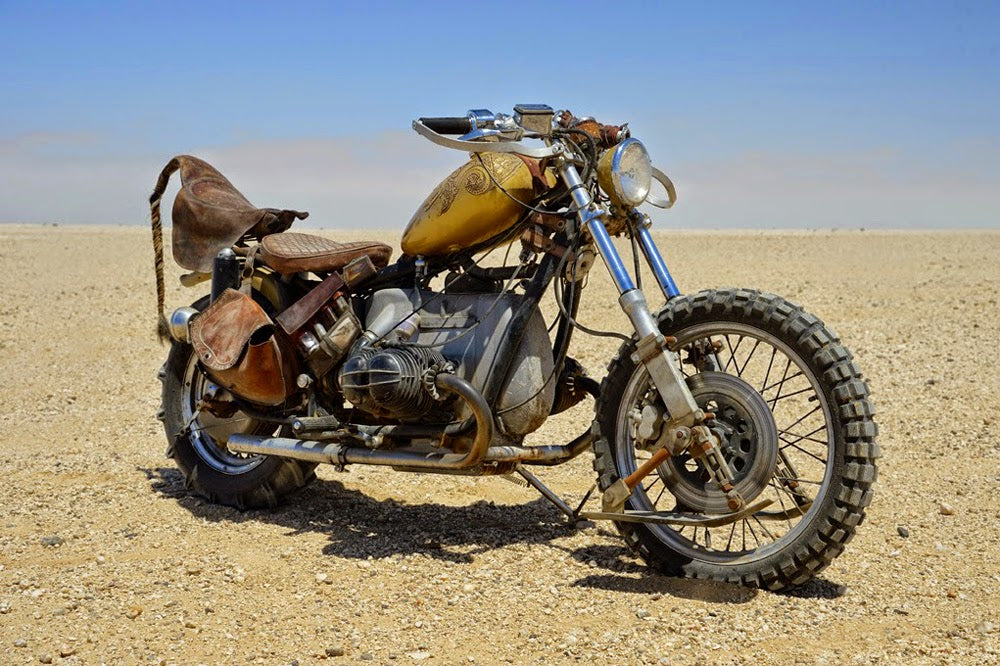
The goal is to have a utilitarian motorcycle with a worn-out, "rat" style, often made with recycled parts.
Common elements include the use of leather, rust, grilles, and raw materials. This style is similar to rat's bikes.
We can find café racers, scramblers, and even customs with this style.
What is your favorite style?
Leave a comment
Comments will be approved before showing up.














